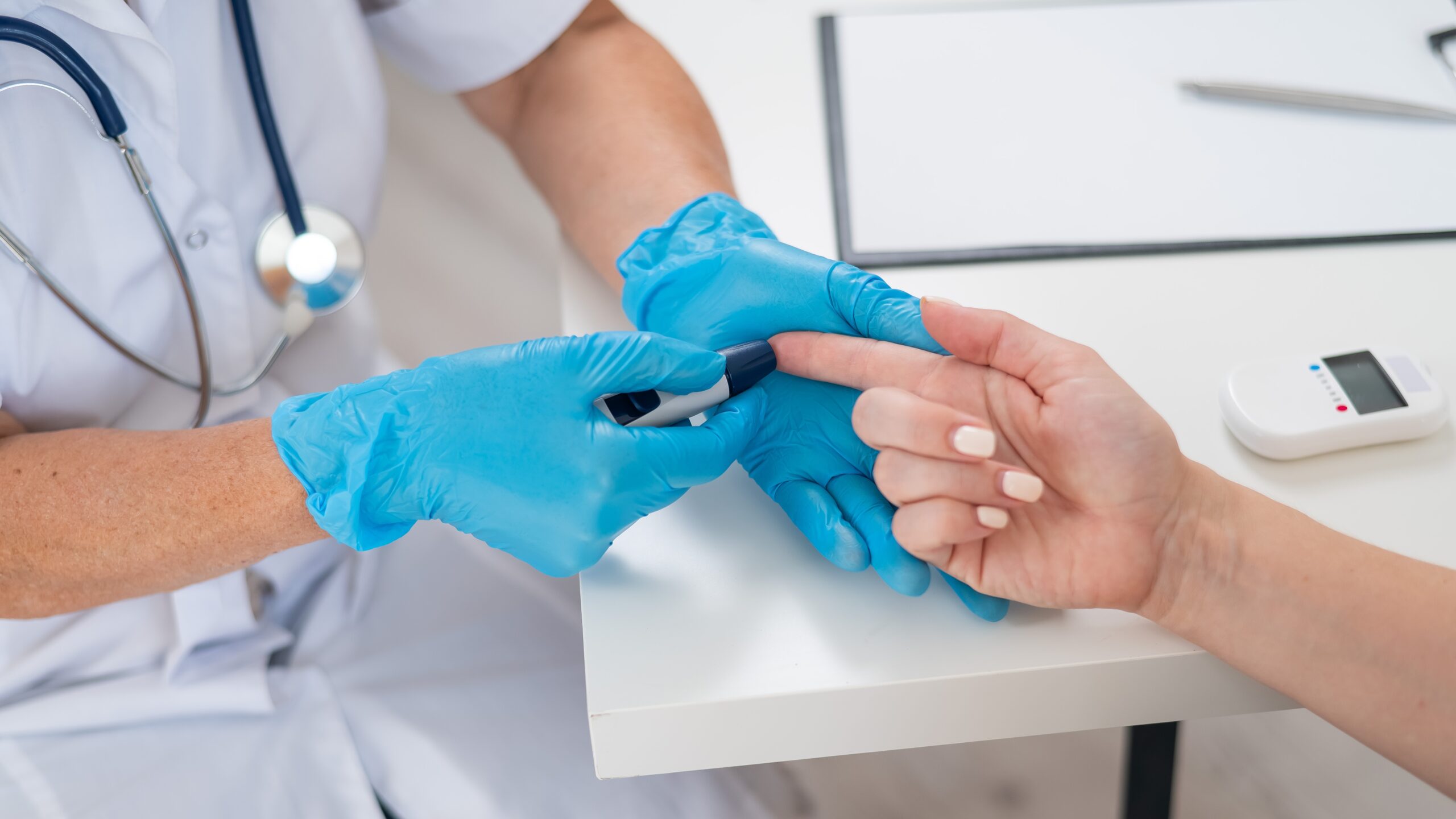The Texas heat and humidity can be dangerous, especially during high heat index days here in The Crossroads.
Heat-related illnesses like heat exhaustion and heat stroke can escalate quickly, putting vulnerable populations (and anyone spending time outdoors) at serious risk.
At Victoria ER, we understand how stressful this can feel. Our experienced emergency team is ready 24/7 to provide personalized, expert care, helping you and your loved ones stay safe, stabilize quickly and prevent heat illness and potential life-threatening complications, like heat stroke.
Continue reading to learn about the warning signs, take practical precautions and trust that the right care is available when you need it most.
Why The Crossroads faces high heat index risks
What heat index means for your health
The heat index, sometimes called the apparent temperature, describes how hot it actually feels when humidity is combined with high air temperatures. In humid climates, like The Crossroads, the body’s ability to cool itself through sweating is reduced, making the heat index especially dangerous.
For example, when the air temperature is 96°F and the relative humidity is 65%, it doesn’t just feel hot, it feels like 121°F. That’s the number the National Weather Service uses to warn communities about the risk of heat illness.
As the heat index rises, so does the chance of:
- Fatigue and weakness
- Painful muscle cramps
- Heat exhaustion (e.g., heavy sweating, dizziness, nausea)
- Heat stroke (e.g., dangerously high body temperature, confusion, seizures, and even life-threatening complications)
Seasonal trends and local climate factors
Here in The Crossroads, summer heat combines with Gulf Coast humidity to create extreme heat index levels. The risk is especially high during hurricane season (June to November), when tropical weather systems bring heavy moisture inland.
Combine this seasonal trend with factors like prolonged heatwaves, limited shade, and outdoor work or sports activities make local residents (especially children, older adults, and those with existing health conditions) even more vulnerable.
Staying alert to heat index warnings and knowing the signs of heat illness are essential for protecting your health during Texas summers.
Heat exhaustion vs heat stroke in Victoria, TX
Early warning signs to watch for
Heat-related illnesses often begin with signs of heat exhaustion but can quickly progress to heat stroke if left untreated.
Heat exhaustion
Prevent heat illnesses like heat exhaustion by knowing the warning signs, which may include:
- Heavy sweating
- Weakness or fatigue
- Dizziness or fainting
- Headache
- Nausea or vomiting
- Muscle cramps
If you or a loved one experiences any of these warning signs, take them seriously.
What to do right away:
- Move to a cool, shaded area
- Rest and rehydrate with cool water
- Remove excess clothing
- Apply cool, wet cloths to the skin
Come to Victoria ER if symptoms do not subside or worsen.
Heat stroke
Heat stroke is much more severe and requires immediate emergency care. The Mayo Clinic says common warning signs include:
- Body temperature of 104°F or higher
- Confusion, agitation, or slurred speech
- Hot, dry skin (or sweating that suddenly stops)
- Nausea and vomiting
- Flushed skin
- Rapid breathing
- Racing heart rate
- Headache
How symptoms progress without treatment
Without prompt care, heat exhaustion can escalate to heat stroke, especially in areas like The Crossroads, where high humidity stops sweat from evaporating and cooling the body.
Heat stroke is a life-threatening emergency that can damage the brain, heart, kidneys, and muscles.
Come to Victoria ER at the first sign of heat stroke.
Prevention tips for high heat index days
When the air temperature and humidity rise, so does the risk of heat-related illnesses. It’s important to be prepared and listen to your body.
Stay cool: shade, air conditioning (AC), and rest strategies
- Stay in air-conditioned spaces whenever possible (e.g., at home or in public spaces like libraries, malls, or local cooling centers in Victoria).
- Block out the sun indoors by closing curtains or blinds during the day.
- Limit indoor heat build-up by avoiding ovens and stoves during the hottest hours.
- Use fans to circulate air and help your body feel cooler.
- Avoid being outdoors between 10 a.m. and 4 p.m., when the heat index is highest. If you must be outside, take frequent breaks in shaded areas to avoid overheating.
- Reschedule or postpone non-essential outdoor activities.
- Plan strenuous work and exercise for early morning or late evening, when it’s cooler.
- Cool down with a shower or bath if you’re feeling overheated.
Look out for those most at risk: Children, older adults, outdoor workers, and people with chronic health conditions are more vulnerable to heat-related illnesses. Check in on family, friends, and neighbors during extreme heat waves.
Hydration and electrolyte balance
Staying hydrated is one of the best ways to prevent heat illness, especially when high humidity makes sweating less effective.
- Drink water regularly, not just when you feel thirsty.
- Add electrolytes when you sweat heavily or work outdoors. Try sugar-free sports drinks, electrolyte packets, or coconut water.
- Limit alcohol, soda, and caffeinated drinks as these can actually dehydrate your body.
- Encourage children and older adults to drink water often, as they may not notice they’re thirsty until they’re already dehydrated.
Protective clothing and sunscreen use
Stay cool and safe in the hot Texas sun with these tips:
- Wear lightweight, light-colored, loose-fitting clothing to help sweat evaporate.
- Wear a wide-brimmed hat for shade.
- Apply sunscreen as directed (SPF 30 or higher) to protect against sunburn and reduce your risk of heat exhaustion.
- Wear sunglasses with UV protection to protect your eyes from harmful UV rays.
Quick checklist for staying safe
Daily routine adjustments for summer
- Drink water regularly, not just when you’re thirsty.
- Rest often and in shaded or air-conditioned spaces.
- Wear light, breathable fabrics and SPF 30 or higher.
- Avoid outdoor activities between 10 a.m. and 4 p.m.
- Check on children, older adults, and neighbors.
- Know the warning signs of heat illness and when to seek help.
What to pack in a heat safety kit
Being prepared during a Texas heat wave can make all the difference, especially if you’re planning to be away from home.
- Broad-spectrum sunscreen (SPF 30+) and a lip balm with SPF
- Lightweight hat and cooling neck wrap
- Electrolyte drinks or oral rehydration packets
- Reusable water bottles
- Portable fan or battery-powered misting fan
- First-aid supplies (e.g., bandages, antiseptic wipes, etc.)
- Dehydration salt tablets
- Snacks that replace salt and minerals lost in sweat
- Emergency contact information
- Fully charged cell phone and portable charger
If you or your loved one exhibits symptoms of heat illness, despite these precautions, visit Victoria ER for fast, emergency care.
When to seek emergency care in Victoria
Danger signs requiring immediate medical help
Go directly to Victoria ER if you or someone near you shows any sign of heat stroke or severe illness. Heat stroke is life-threatening and requires immediate medical attention:
Danger signs include:
- Body temperature of 103°F or higher
- Hot, dry skin or a sudden stop in sweating
- Confusion, slurred speech, or unusual behavior
- Seizures
- Loss of consciousness
- Severe nausea or vomiting
How Victoria ER treats heat-related illness
At Victoria ER, our board-certified ER physicians and clinical team provide rapid heat stroke treatment and care for heat exhaustion to stabilize patients quickly. Our treatments include:
- Physical assessment and symptom check
- Vital sign evaluation
- IV fluids and electrolyte replacement (if needed)
- Cooling methods to reduce body temperature
- Continuous monitoring to prevent heat illness complications
- Close coordination with specialists (if advanced care is needed)
Victoria ER: your 24/7 heat illness care resource
Location, hours, and contact information
Victoria ER is open 24/7, every day of the year, including holidays and during severe weather events, to provide high-quality, compassionate care for heat stroke or heat exhaustion in Victoria, TX.
- Address: 6703 N Navarro St, Victoria, TX 77904
- Phone: (361) 573-1500
Get Directions: Search “Victoria ER Navarro St” in your maps app.
Direct access to emergency services
You do not need an appointment to be seen at Victoria ER. Walk in any time for an immediate evaluation and prompt treatment. Our emergency medical services mean you’ll get the answers — and care — you need fast.





